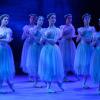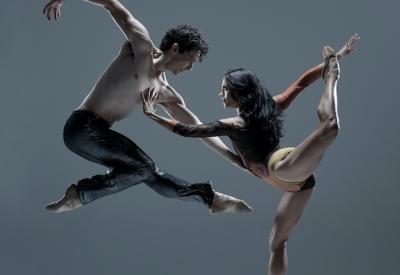
Based in New York City, Complexions Contemporary Ballet, which has been hailed by The Philadelphia Inquirer as “a matchless American dance company,” is having a Southern California moment. After presenting three acclaimed performances at The Music Center’s Dorothy Chandler Pavilion in June, the group, founded in 1994 by Dwight Rhoden and Desmond Richardson, will be at Thousand Oaks’ Fred Kavli Theatre on Sept. 13 and will make its debut at Segerstrom Center for the Arts on Sept. 16.
Rhoden, who was recently appointed artistic professor of dance at Chapman University and has choreographed more than 100 works for this troupe that is a testament to sculpted lines and a hyperphysical aesthetic, agrees. “It seems as though the audience in California loves the company. I also think that the company really does bridge a lot of different things in terms of concert dance, the commercial world, entertainment, and contemporary ballet. It’s relatable in a way that’s kind of unique to California, especially in the Los Angeles area.”
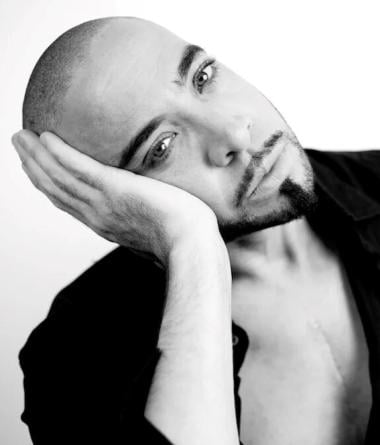
Indeed, by marrying choreography to music that ranges from Antonio Vivaldi and Beethoven to David Bowie and Kendrick Lamar, Rhoden (born in 1962) has his finger on the pulse of all that is hip — and then some. The Segerstrom program includes an excerpt from Hissy Fits (2006), set to Bach; an excerpt from Snatched Back From the Edges (2021), which makes use of music by Tye Tribbett; and the West Coast premiere of Endgame/Love One (2022), accompanied by a mixtape of recent hits, including Drake and Post Malone. In addition, there’s a preview from Rhoden’s as-yet-untitled ballet featuring a soundtrack by U2.
Offering new takes on classic ballet and pushing the boundaries of technique, the 16 multiethnic dancers of Complexions, aged 19 to 32, take the art form to new heights. And with Rhoden and Richardson both alumni of Alvin Ailey American Dance Theater — The New York Times described them as “two of the greatest virtuosos ever to emerge from Ailey” — it’s no surprise that their own troupe is a showcase for unmitigated talent, whether the movers are showing off slinky unisons, sky-high extensions, or angled stances.
As co-directors of Complexions, Rhoden and Richardson have proven a resilient and auspicious pairing. Richardson — a Bessie Award winner whose credits include a Tony-nominated turn in Fosse in 1999 and who has appeared on celebrated stages across the world, among them the Metropolitan Opera, The Kennedy Center, and the Paris Opera — has served as Rhoden’s muse over the years.
“When ballets are made, he or I have an idea and might look for the music first,” explained Richardson, 54. “Or Dwight will say, ‘Let’s try and figure this out. What’s the premise of it?’ We look at all of those things, then we figure out how to maneuver it.
“Dwight needs to speak about ideas. He writes all day, every day, many of his ideas. That’s the interesting thing. He has the ability to translate his ideas, then they’re pushed forward within the choreography.”
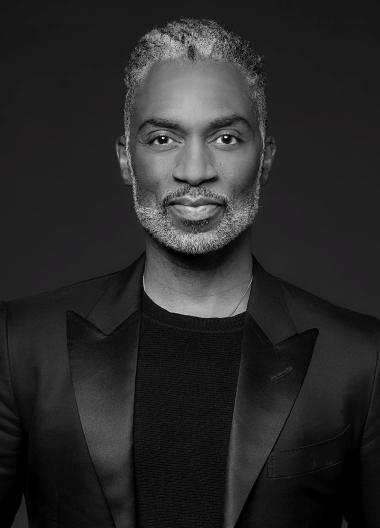
“Des is part of my process,” Rhoden acknowledged. “I talk to him about everything that I do, even if [the choreography] isn’t for Complexions. For Pacific Northwest Ballet, I sent him daily clips and asked for his take on what he saw. He’s always got feedback about what I’m doing. But it’s kind of how we’ve always operated. We’re connected from a creative standpoint. He’s someone I lean on and trust. I value his opinion. We’ve always worked collaboratively, [and] we don’t always agree … but we bargain it out.”
As for what comes first — the music, steps, or concept — Rhoden said it depends on the ballet and that “it’s always different.” For the one-act Woke, which premiered in 2019 and was on the June bill at The Music Center, he said that the score, a remix of music by Bill Evans, Drake, and others, came later.
For Endgame/Love One, the dancemaker explained that the idea came first. “I knew that I wanted to do a trilogy of three works, Woke, Snatched Back From the Edges, and Endgame, [which] were pre-pandemic, pandemic, and post-pandemic. That’s how they all came together. It took me a moment to get the right mix, but I’m a music guy,” Rhoden said emphatically. “I listen to everything. I like scoring a ballet, and I’m meticulous about what the audience is going to hear.”
And audiences will hear — and see — plenty when Complexions celebrates its 30th anniversary next year, which is no small achievement, especially in these post-COVID times. And while neither Rhoden nor Richardson could point to a secret for their longevity, they both recognize the significance of the occasion and have been planning the commemorative season accordingly.
“I don’t know what the secret is,” Rhoden admitted. “All I know is it’s the hardest thing I’ve ever done in my life. We make it by the hair on my chinny chin chin and somehow get it done. All the noise and all the other stuff along the way, it can be easy to get distracted. But I’ve always been a person who likes to talk about what’s going on in the world now. I’m a ‘now’ guy as opposed to ‘then.’”
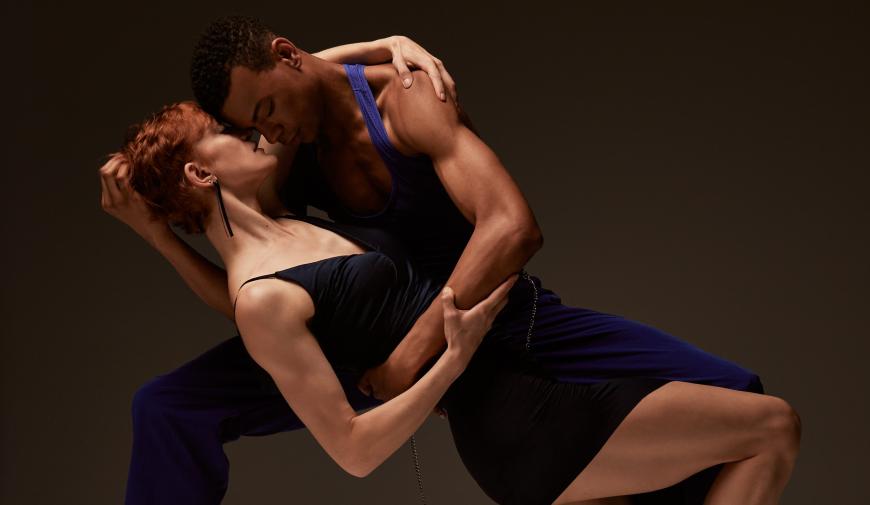
“We’ve evolved and changed and grown, I hope,” Rhoden continued. “But I think the company is on target for what it was when we created it back in 1994. We’ve carved out a bit more, but the intention is the same, and our messaging is the same. Staying on track with who you are — there are people who will love you and those who hate you, but you don’t need to listen to that.”
Positivity being part of the troupe’s ethos, Richardson pointed out that it’s important to “stay in communication and align ourselves with people who love what we do, who support what we do — and also make sure we’re keeping our ears and eyes to the future. We learn from our past to create our future, and exploring what dancers of today have to say is also part of it.”
Of his and Richardson’s days with the Ailey troupe, Rhoden recalled, “Coming from the Ailey company — and Mr. Ailey — it was all about having an experience. Being in that company for those years, the resounding thing we walked away from that experience with was the human connection, that spirituality and reaching your audience and bringing them in. We’ve calibrated that for Complexions, and the spirit is the same. I hope we will never stop doing it. That’s the key to who Complexions is — filling that space and really connecting.”



